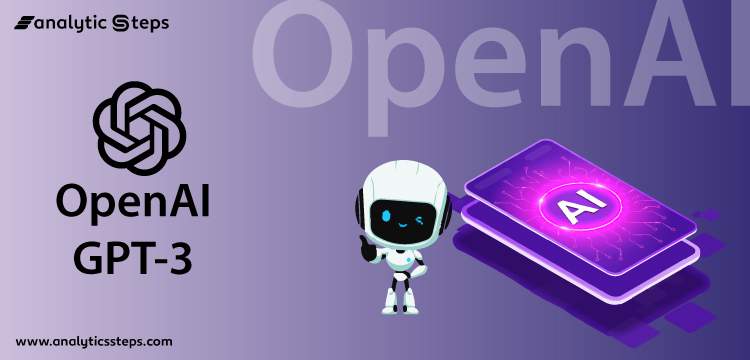Paragraph 1:
In this era of technological advancements, Artificial Intelligence (AI) has been a buzzword around the world. AI is the simulation of human intelligence in machines that are programmed to think, learn, and perform tasks that generally require human intelligence. One such AI technology that has caught the attention of many businesses and individuals is GPT-3 OpenAI. GPT-3 stands for Generative Pre-trained Transformer 3, and it is an AI-based language model that can perform various language tasks, such as generating human-like text, translating languages, answering questions, and much more.
Paragraph 2:
GPT-3 is developed by OpenAI, a research organization co-founded by Elon Musk and others. GPT-3 uses a neural network with billions of parameters, making it one of the largest language models in the world. This powerful AI technology has the potential to revolutionize the way we communicate, work, and learn. In this article, we will explore the features of GPT-3 OpenAI, its capabilities, and how it is changing the world of AI. So, buckle up and get ready to dive into the world of GPT-3 OpenAI.

What is GPT-3 OpenAI?
GPT-3 OpenAI is an artificial intelligence system developed by OpenAI, a research laboratory based in San Francisco, California. It is a language model that uses deep learning, natural language processing, and machine learning to generate human-like text. The system is trained on a massive amount of text data, including books, articles, and webpages. GPT-3 OpenAI is one of the most powerful language models ever created and is capable of generating text that is indistinguishable from that written by humans.
How Does GPT-3 OpenAI Work?
GPT-3 OpenAI is a natural language processing (NLP) system that uses deep learning, a type of machine learning algorithm that learns from large datasets of text. The system is trained on a massive amount of text data, including books, articles, and webpages. GPT-3 OpenAI is a transformer-based language model that uses a combination of word embeddings, attention, and recurrent neural networks to generate human-like text.
GPT-3 OpenAI is able to generate text that is indistinguishable from that written by humans. The model is able to generate text on any given topic, making it useful for a variety of tasks such as summarizing articles, generating text for chatbots, and creating original stories. GPT-3 OpenAI can also be used to generate text for applications such as predictive text, auto-completion, and question answering.
Applications of GPT-3 OpenAI
GPT-3 OpenAI has a wide range of applications in the field of natural language processing. It can be used to create text for applications such as summarizing articles, generating text for chatbots, and creating original stories. GPT-3 OpenAI is also used to generate text for predictive text, auto-completion, and question answering.
The model can also be used to generate text for a variety of other applications such as text classification, language translation, and text summarization. GPT-3 OpenAI is also used for text-based interactive tasks such as question answering, dialogue systems, and goal-oriented dialogue systems. In addition, the model can be used for text-based game development, including game dialogue and virtual worlds.
GPT-3 OpenAI is being used in many industries, from healthcare to finance, to assist with a variety of tasks. The model can be used to generate text for applications such as medical diagnoses, stock predictions, and customer service chatbots. GPT-3 OpenAI is also being used to generate text for virtual assistants and automated customer service agents.
Frequently Asked Questions
GPT-3 OpenAI is a groundbreaking natural language processing model developed by OpenAI. It uses a Transformer-based architecture to generate text, and can generate meaningful and coherent responses to queries. It has been trained on a massive dataset of text samples and can generate much more accurate and realistic responses than other models.
What is GPT-3 OpenAI?
GPT-3 (Generative Pre-trained Transformer 3) is an unsupervised language model developed by OpenAI that uses a Transformer-based architecture to generate text. It is trained on a massive dataset of text samples, and can generate much more accurate and realistic responses than other models. GPT-3 has been used for a variety of tasks, from question-answering to text-generation and summarization.
GPT-3 OpenAI is the latest iteration of the GPT model, and has achieved unprecedented success in natural language processing tasks. It has been trained on an unprecedented amount of text data, and uses a sophisticated self-attention mechanism to generate highly accurate and realistic responses. GPT-3 OpenAI is a powerful tool for language-related tasks, and has been used by developers, researchers, and businesses to create powerful language-based applications.
GPT 3 Explained | What is GPT 3 | GPT 3 DEMO | GPT 3 AI | Artificial Intelligence | Simplilearn
In conclusion, GPT-3 OpenAI is a groundbreaking natural language processing tool that has revolutionized the way we interact with machines. With its ability to understand and generate human-like language, it has opened up new possibilities for businesses, developers, and researchers alike. The level of accuracy and efficiency it provides is simply unparalleled, making it a valuable asset to anyone looking to harness the power of natural language processing.
As we move towards an increasingly digital age, the importance of effective communication between humans and machines cannot be overstated. GPT-3 OpenAI is a significant step towards bridging that gap, and it is exciting to think about the possibilities that lie ahead. With continued development and integration, this technology could change the way we interact with our devices, making them more intuitive and responsive than ever before. As a professional writer, I am excited about the potential for GPT-3 OpenAI to enhance my work and help me communicate more effectively with my audience.



